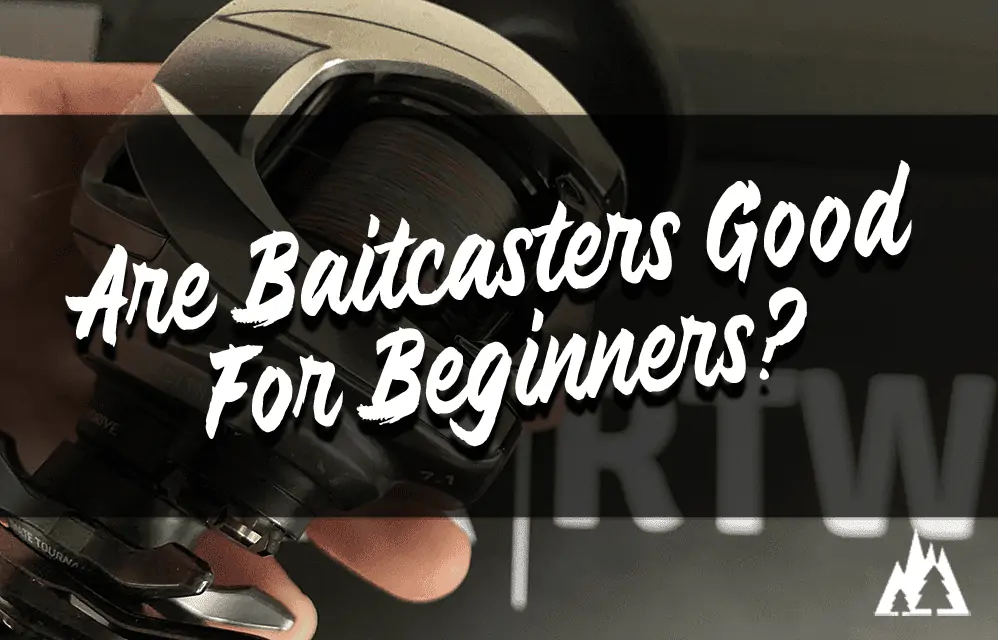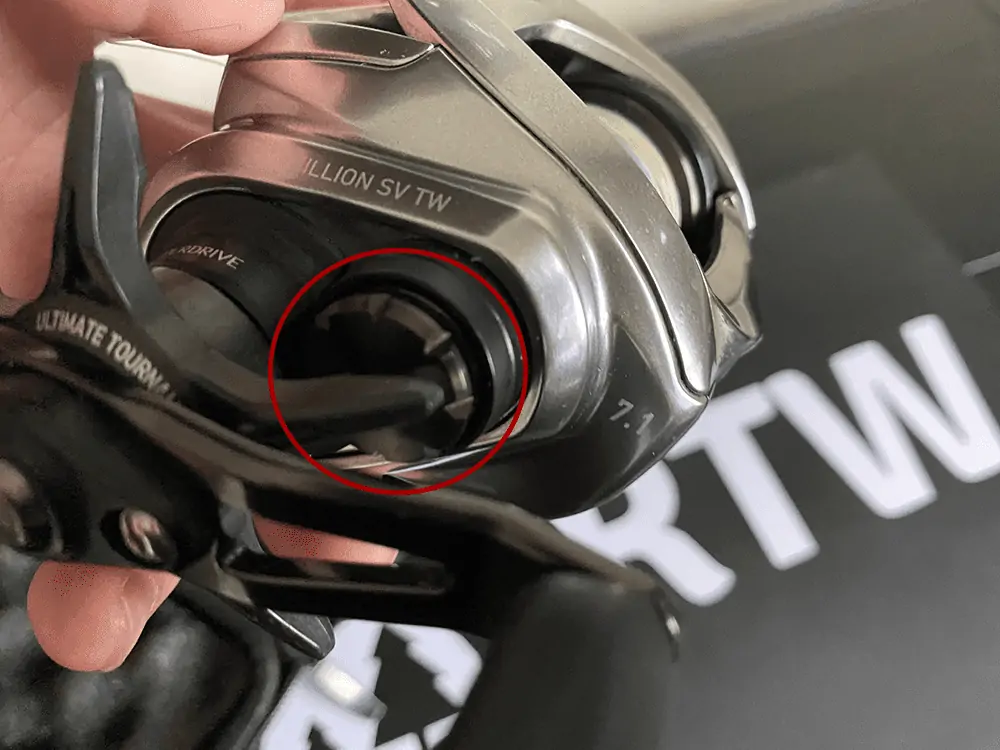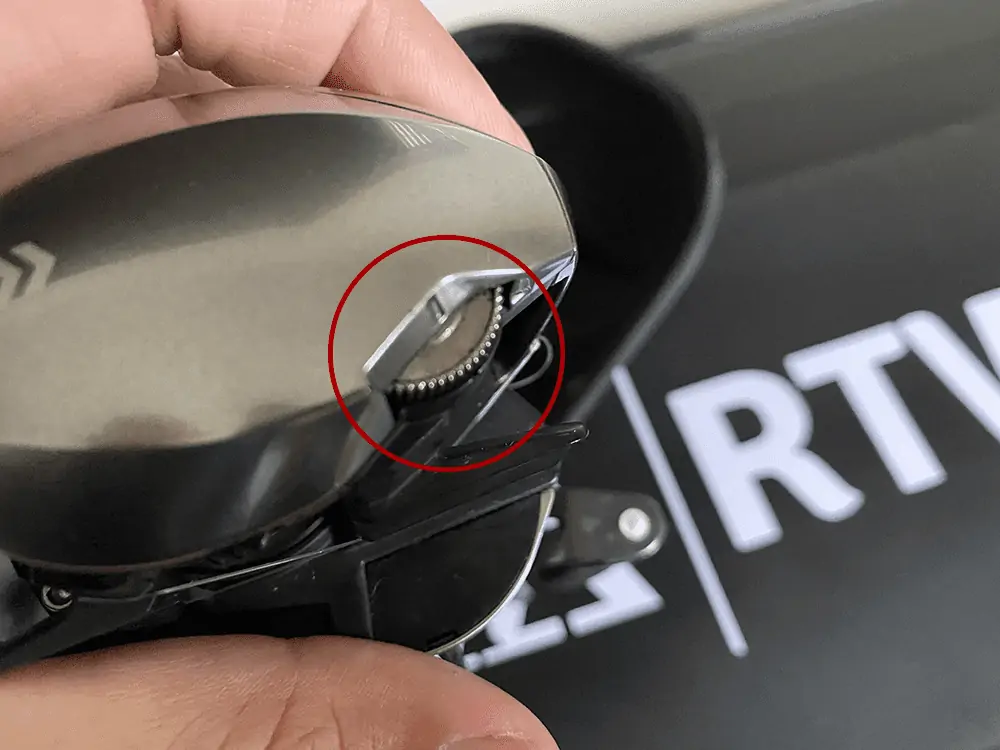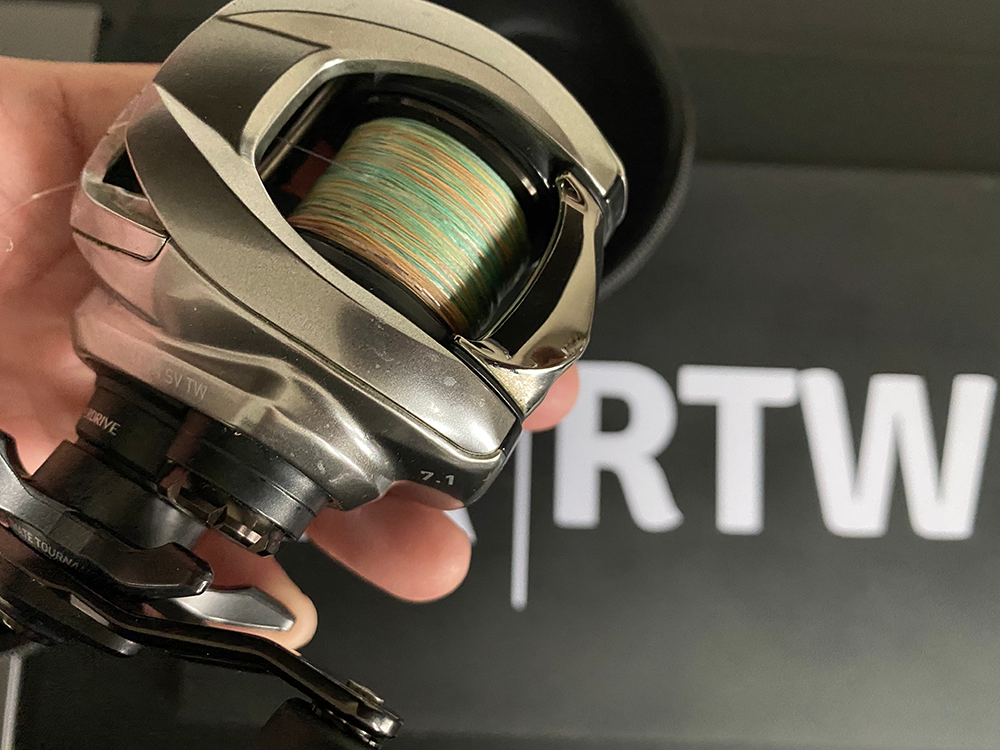Is A Baitcaster Good For Beginners? My Honest Opinion.

For the novice angler, you might ask yourself, “is a baitcaster good for beginners?”
Baitcasters are not the best options if you’re new to fishing because it requires more skill, practice, and tinkering to minimize backlashes.
Baitcasters have their place over spinning reels, but if you’re looking to get the basic techniques and strategy down, a spinning reel will be your best bet.
Here’s why…
- Starting off with a baitcaster might frustrate you out of the sport.
- To minimize backlashes, you’ll have to constantly adjust the spool tension knob and brake system whenever you change a different lure.
- Depending on the type of fishing you’re doing, you might not even need a baitcaster.
With that said…
Everyone’s different, and you might pick up the skills quickly.
Plus, baitcasters are getting much easier to use with all the technological advances over the years. (Which I’ll explain below)
But fishing can be intimidating for beginners if you’re a new angler.
Why even bother with a baitcaster in the first place, right?
A baitcaster combines the accuracy of spinning reels with power that rivals conventional casting reels.
New technology like digital control braking makes using a baitcaster easier than ever before; however, there are still some considerations to make when choosing one, as well as tips on how to use them properly if you’re new to this type of reel.
Let’s get into it.
What is a Baitcaster?
A baitcaster is a fishing reel designed to precisely cast baits and lures. It consists of a spool, handle, line guide, frame, and brake system. The spool holds the fishing line and rotates when you turn the handle.
The line guide directs the line off the spool as it’s released during casting.
The frame houses all components in place while providing support for your hands when cranking or retrieving your lure.
Finally, the brake system allows you to control how much tension is applied to your line as you cast out from the reel.
Benefits of Using a Baitcaster
One of the baitcasters that I use the most these days is my Daiwa Zillion SV TW ZBoost baitcaster reel, and I love it.
Using a baitcaster is becoming increasingly popular among anglers of all skill levels.
Baitcasters, also known as casting reels, are designed to cast lures and baits with precision and accuracy over long distances. This type of reel offers many advantages over spinning reels, making them the preferred choice for many anglers.
Accuracy
One of the main benefits of using a baitcaster is its superior accuracy compared to other fishing reels.
For example, the spool on a baitcaster rotates freely during the cast, allowing you to place your lure or bait exactly where you want it without having to worry about backlashes or tangles from line overruns like you would with a spinning reel.

Control
Another advantage of using a baitcaster is its ability to provide more control over your casts than other types of reels can offer. For example, with adjustable brakes and magnets, you can easily adjust the speed at which your line comes off the spool giving you greater control over how far and accurately your lure will travel in any given situation.
Power
Baitcasters are also much more powerful than their spinning counterparts due to their larger gearing ratio, which allows them to generate more torque when retrieving heavier fish or fighting strong currents or winds while still providing smooth operation throughout each cast and retrieve cycle.
This makes them ideal for targeting large gamefish such as bass, pike, muskie, walleye, etc.
Versatility
Lastly, one benefit that sets baitcasters apart from other types of fishing reels is their versatility; they can be used in both freshwater and saltwater environments, making them an ideal choice for those who enjoy chasing larger species in various bodies of water across North America (and beyond) that require more torque for retrieval.
Digital Control Braking (DC)
20 years ago, DC reels entered the market from Shimano that changed the game for using baitcasters.

Daiwa has a similar braking system that uses all magnets called the SV Boost.
That’s about the extent of my knowledge of the new braking systems for both brands.
There are a ton of tackle junkies that can explain the science behind it all, and I’m not one of them.
I like to head out to the water to get my line wet and test the reels by trial and error.
They have become increasingly popular among modern-day baitcasters due to their ability to provide precise levels of friction when releasing line during casting sessions allowing users greater accuracy when aiming towards specific targets within bodies of water, whether nearshore or offshore alike, without worrying about backlash occurring mid-cast.
These brakes consist primarily of two main parts:
- An internal magnet located inside each side plate helps regulate friction levels depending on how much pressure one applies via thumb while holding down either side plate button (depending on the model)
- External magnets mounted around the outer perimeter frame help keep everything aligned throughout the entire process, ensuring optimal performance.
Digital control braking is a feature found on many baitcasting reels, making it easier for beginners to use them without too many backlashes.
This braking system uses magnets and centrifugal force to slow the spool as it rotates, allowing you to cast with more accuracy and less backlash.
The digital control brake adjusts the magnetic drag applied to the spool as it spins. The greater the magnetic drag, the slower the spool will spin and thus reduce backlashes.
The amount of magnetic drag can be adjusted manually or automatically, depending on your preference.
For manual adjustment, there are usually two knobs near where your thumb rests when casting: one for speed (how fast or slow you want your reel to turn) and another for tension (how much resistance you want from your line).
By adjusting these knobs, you can adjust how quickly or slowly your reel turns to get just enough tension in order not to cause any backlashes while still having an accurate cast.
Automatic adjustment is also available on some models, which allows users to set their desired level of tension before they start fishing so that they don’t have to constantly adjust their settings during each cast.
With this option, all users need do is press a button once they have determined what setting works best for them and then let go – no further adjustments needed!
Digital control brakes are great tools for beginner anglers who may not yet be familiar with traditional baitcasting techniques such as feathering or double-hauling lines to avoid backlash problems caused by too much line being released at once during a cast.
They also make it easier for experienced anglers who may find themselves dealing with difficult conditions, such as windy days where even small changes in technique can lead to major issues with accuracy and/or backlashing due to incorrect timing when releasing lines into casts.
Overall, digital control brakes provided an easy way for novice and experienced anglers alike to improve their casting performance without having to worry about making constant adjustments throughout their time out on the water, allowing them to focus more on catching fish.
Digital control braking is an important feature to consider when selecting a baitcaster, as it allows you to adjust the speed of your cast and prevent line tangles. Now, let’s consider some considerations for choosing the right baitcaster for beginners.

Considerations When Choosing a Baitcaster
When it comes to choosing a baitcaster, there are several important considerations. The first is the number of bearings in the reel. Generally speaking, more bearings mean smoother operation and better performance.
For example, look for reels with at least five ball bearings or ceramic hybrid bearings for optimal performance.
The frame material and profile should also be considered when selecting a baitcaster. Aluminum frames are lightweight yet strong, while graphite frames offer increased sensitivity and strength-to-weight ratio.
Look for low-profile designs that allow you to cast further without adjusting your grip on the handle as much during casting motions.
Gear ratios are another factor to consider when choosing a baitcaster; higher gear ratios provide faster retrieves but less torque than lower gear ratios which can be beneficial if you’re fishing heavier lures or trying to move fish away from cover quickly.
Reels with adjustable magnetic brakes help reduce backlash by allowing anglers to fine-tune their casts according to lure weight and wind conditions so they can make longer casts with greater accuracy, even in challenging conditions such as heavy winds or fast currents.
When considering a baitcaster, weighing the pros and cons of different features and capabilities is important. Knowing what you want from your fishing experience can help make sure you choose the right baitcaster. Next, we’ll look at beginner tips when using a baitcaster.
Tips for Beginners
Using a baitcaster is an essential skill for any angler. It can be intimidating at first, but with the right tips and techniques, you’ll be casting like a pro in no time.
Setting the Drag
The drag on your baitcaster is one of the most important features to understand. The drag helps control how much line comes off when you cast or when a fish takes your lure.
To set it correctly, start by loosening it all the way, then slowly tighten it until there’s enough resistance that it won’t slip out of your hands if you give it a tug. If you’re using light lures or lines, make sure to adjust accordingly so as not to break them off during use.
Line Weight and Lure Size
It’s important to match up your line’s weight with the lure’s size. For example, if you’re using small lures such as crankbaits or jigs, lighter lines are best suited for those applications, while heavier lines should be used for larger baits such as spinnerbaits or swimbaits.
This will help ensure that your casts are accurate and efficient while helping reduce tangles and snags along the way.
Reel Speed
Your reel speed should always match up with what type of fishing technique you’re trying to employ; slow speeds work better for finesse presentations, while faster speeds work better for power fishing applications such as flipping or pitching heavy cover where accuracy isn’t necessarily required but distance is key instead.
Make sure to practice different speeds until you find what works best for each situation since this will ultimately lead to more successful outings on the water!
Practice Makes Perfect
Before heading out on the water, take some time to practice with your baitcaster in an open area without any obstructions nearby, such as trees.
This will help increase accuracy when fishing since muscle memory has already been established from previous attempts made beforehand. Practicing makes perfect!
FAQs
Should a beginner use a baitcaster?
As stated, it depends on the individual’s experience level and comfort with baitcasting. Starting with a spinning reel may be best for a beginner as they are generally easier to use and require less skill than baitcasters.
If you have some basic fishing techniques and feel comfortable using a baitcaster, it can be an effective tool for catching fish.
It’s important to practice casting in open areas before attempting to cast in tight spots or around obstacles like trees or rocks. Make sure your line is properly spooled onto the reel so that you can get the most out of your casts.
Is it hard to fish with a baitcaster?
Fishing with a baitcaster can be tricky for beginners, but it’s not impossible. The key is to practice and get used to the feel of the reel.
It will be hard in the beginning, but you’ll get the hang of it the more time you’re out on the water.
Start by casting in an open area with no obstructions, so you can get a sense of how far your lure will go when released from the spool.
Adjust your drag tension as needed until you find what works best for you.
With enough practice, anyone can become proficient at fishing with a baitcaster.
What are baitcasters best for?
Baitcasters are fishing reels that offer anglers increased casting distance and accuracy. They are best used for targeting larger fish species such as bass, pike, musky, and walleye.
Baitcasters also provide more control over the lure or bait being cast due to their adjustable drag system, which allows you to customize your retrieve speed.
They can be used in heavier cover where other reels may struggle due to their ability to handle heavier line weights and have greater cranking power.
Finally, baitcasters allow for better precision when making long casts with lighter lures or baits thanks to their low-profile design, which reduces line tangles during the cast.
Are baitcasters better than spinning reel?
The debate between baitcasters and spinning reels is a long-standing one.
Ultimately, the answer to this question depends on the type of fishing you plan to do.
Baitcasters are generally better for heavier lures and more accurate casting while spinning reels are better suited for lighter lures and longer casts.
If you’re looking for versatility in your tackle box, a combination of both may be best. However, if you have specific needs or preferences when it comes to fishing techniques, either option could be suitable depending on what works best for you.
Before You Go
If you’re new to fishing, I highly suggest you read my resources for fishing gear to help you out on the water below:






